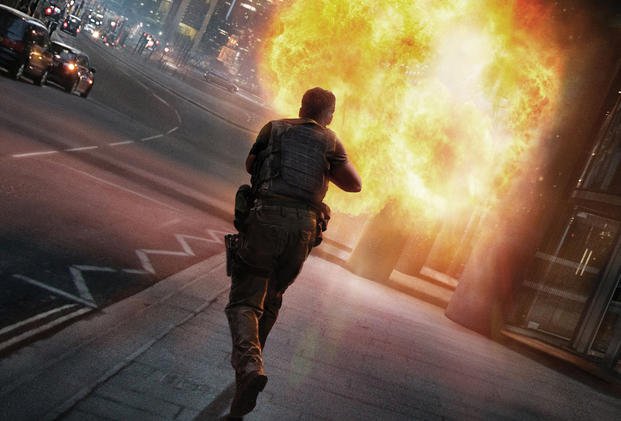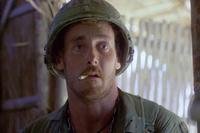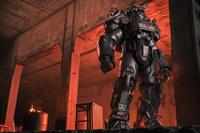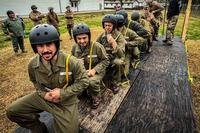By Brian Andrews & Jeffrey Wilson, authors of TIER ONE
(Exclusive for Military.com)
As Navy veterans turned thriller writers, one thing we are often asked is how much of our military experience finds its way into our work. The answer is plenty, but knowing what to include and what not to can be the difference between a high-octane thriller that’s packed with realism and a tedious study of military life. Everyone in the military knows that the reality of combat is long periods of tedium punctuated with moments of terror, but that doesn’t make for satisfying reading. As writers, our job is to strike a balance between that reality and the fictional elements that forge an exciting adventure.
For us, an authentic military novel starts and ends with the people. If you get the characters right, the military thriller audience will enjoy your story far more than if they think you’re trying to show off your encyclopedic understanding of this targeting system or that firearm. In our books, we strive to make characters so real that our brothers in the Navy are able to say, “Yeah, that’s what I would do, and that’s how I’d do it.”

Brian and Jeff show off their book at a Pearl Harbor Event.
So how do we pull it off? By writing real people. Real people enlist in the military and risk their lives on combat missions. Real people become officers who command submarines, fly stealth fighters, and make battle plans in the Pentagon. Every Navy SEAL is someone’s neighbor. He’s the guy next door who takes out the garbage on Wednesday evening, cooks burgers and dogs on Friday night, and cheers for his kid at the Saturday morning soccer game. We’re not saying you have to write those aspects of military life into your book, but we try to always remember that family life and routine matter to our characters. By keeping our characters grounded in the reality of day-to-day, real-life pressures and priorities, we hope we are far less likely to write trite, comic book-like action heroes with no real appeal. It’s the difference between plot-driven and character-driven fiction, and we strive to achieve both. Our characters can perform feats of action hero proportions, but we don’t let them think like one. As veterans ourselves, we can ask the question, “If I had this character’s skillset, how would I feel while I was doing the job? How would having my character’s military obligations impact my home life and my interpersonal relationships and vice versa?” We go with that instinct, and we consult with our active duty military friends and colleagues to make sure we get this part right above all else.
Does that mean it’s okay to ignore the technical aspects? Of course not. No one wants to read a Navy Pilot flying an F-22 Raptor or an Army Ranger kitted out with Marine gear. We do our research, talk with users, and make sure we get the details right. Stopping there, however, makes for a flat, two-dimensional story, so we have to get the characters right. Once you do, then the characters lead us where we need to go. John Dempsey will occasionally whisper, “Dude, I would never do that. What about perimeter security? What about air support? Come on, guys, focus.” We can listen to our characters because they speak with the voices of the real-life heroes we’ve had the privilege to serve with.
Here is the other important question we get asked by our military brethren: “So what about OPSEC?”
As former Naval Officers—and brothers of those still serving—we take OPSEC, or Operational Security, very seriously. In other words, the answer to the question, “Did that really happen like that?” is always a resounding “No.” We write fiction. We strive to write authentic characters and portray action and strategies realistically so that the reader feels like a fly on the wall during a real operation. But when it comes to giving away confidential information on how operations are conducted, we are committed to keeping our fiction fictional.

How do we accomplish this? For starters, we focus on individual and global stakes. Ultimately, it’s not the strategic specifics that matter, it is whether the protagonist’s strategy and actions prevail over those being employed by the antagonist. The reader should be more concerned with “if” the hero prevails than “how” the hero prevails. Tom Clancy was not an actual submarine captain, and Vince Flynn was never a spy, but their characters and stories rang true, not because they violated OPSEC but because they were masters of managing stakes. So rather than trying to sterilize a scene to recreate a real-life event, we use our imagination to push the envelope. It’s okay to rip your heroes and antagonists from the headlines, but we then have to place them in a fictional conflict within our fictionalized world. Readers will be eagerly willing to suspend their disbelief if we give them characters they care about and stakes that make them cringe. Besides, readers can get “real” from watching FOX News or CNN—what they really want is to be thrilled.
We write our books to thrill and enthrall our military brothers and sisters. We aspire to create a universe with military characters that make former and current military members proud to say they are part of the Armed Forces. When our readers are willing to call our characters their brothers and sisters, then we know we’ve done our job well.
Thank you all for your service. And please don’t hesitate to let us know what you think. We want to hear from you. You can find us at www.andrews-wilson.com.
TIER ONE is available now from Amazon.
BRIAN ANDREWS
Midwest born and raised, Brian Andrews is a US Navy Veteran who served as an officer aboard a 688 class fast attack nuclear submarine in the Pacific. He graduated summa cum laude from Vanderbilt University with a degree in psychology. He is a Park Leadership Fellow and holds a Masters degree from the Johnson School at Cornell University.
JEFFREY WILSON
Jeffrey Wilson has at one time worked as an actor, a firefighter, a paramedic, a jet pilot, a diving instructor, a Naval Officer, and a Vascular and Trauma Surgeon. He also served two tours in Iraq as a combat surgeon with both the Marines and with a Joint Special Operations Task Force as part of his service with an East Coast based SEAL team.




